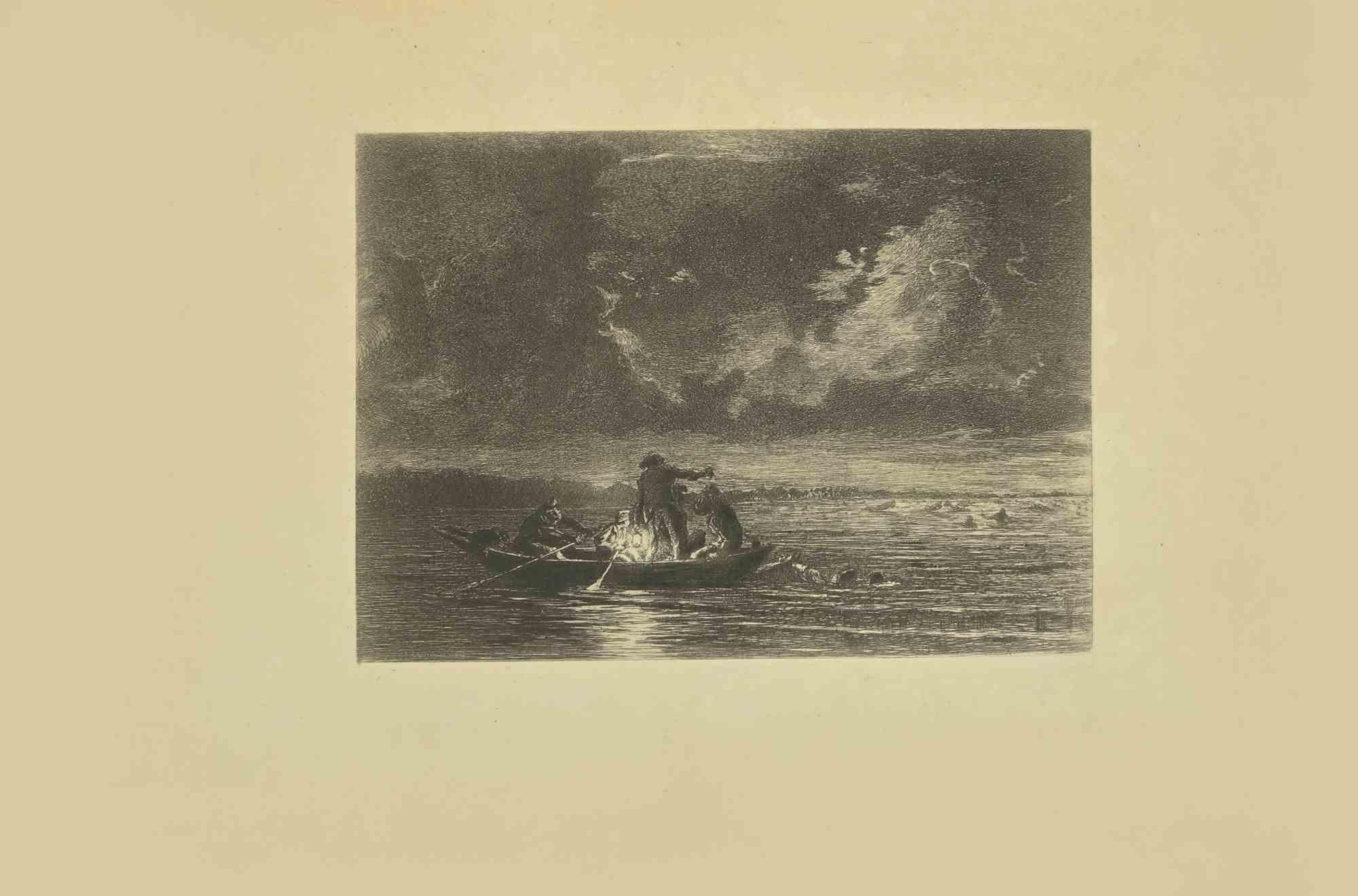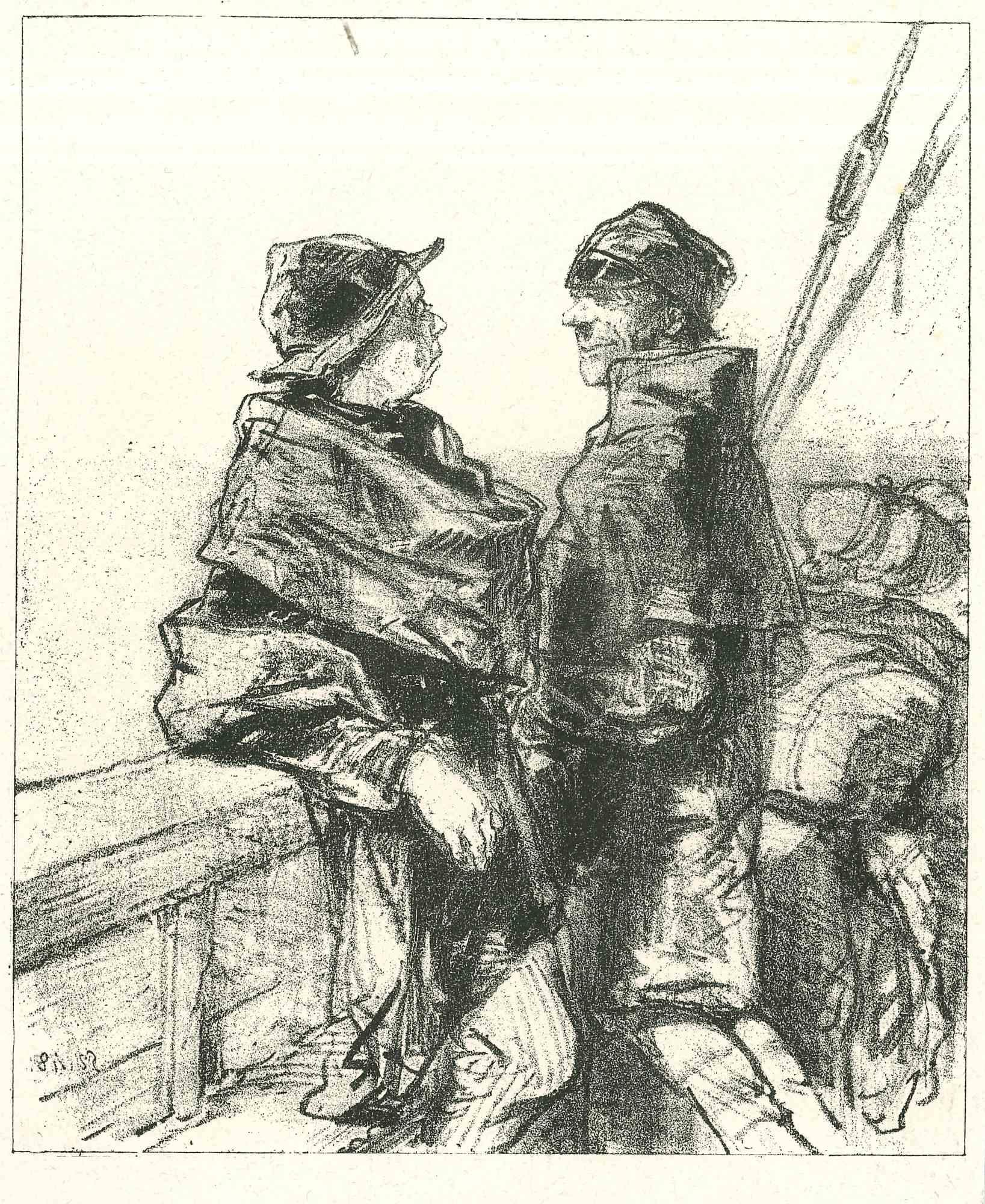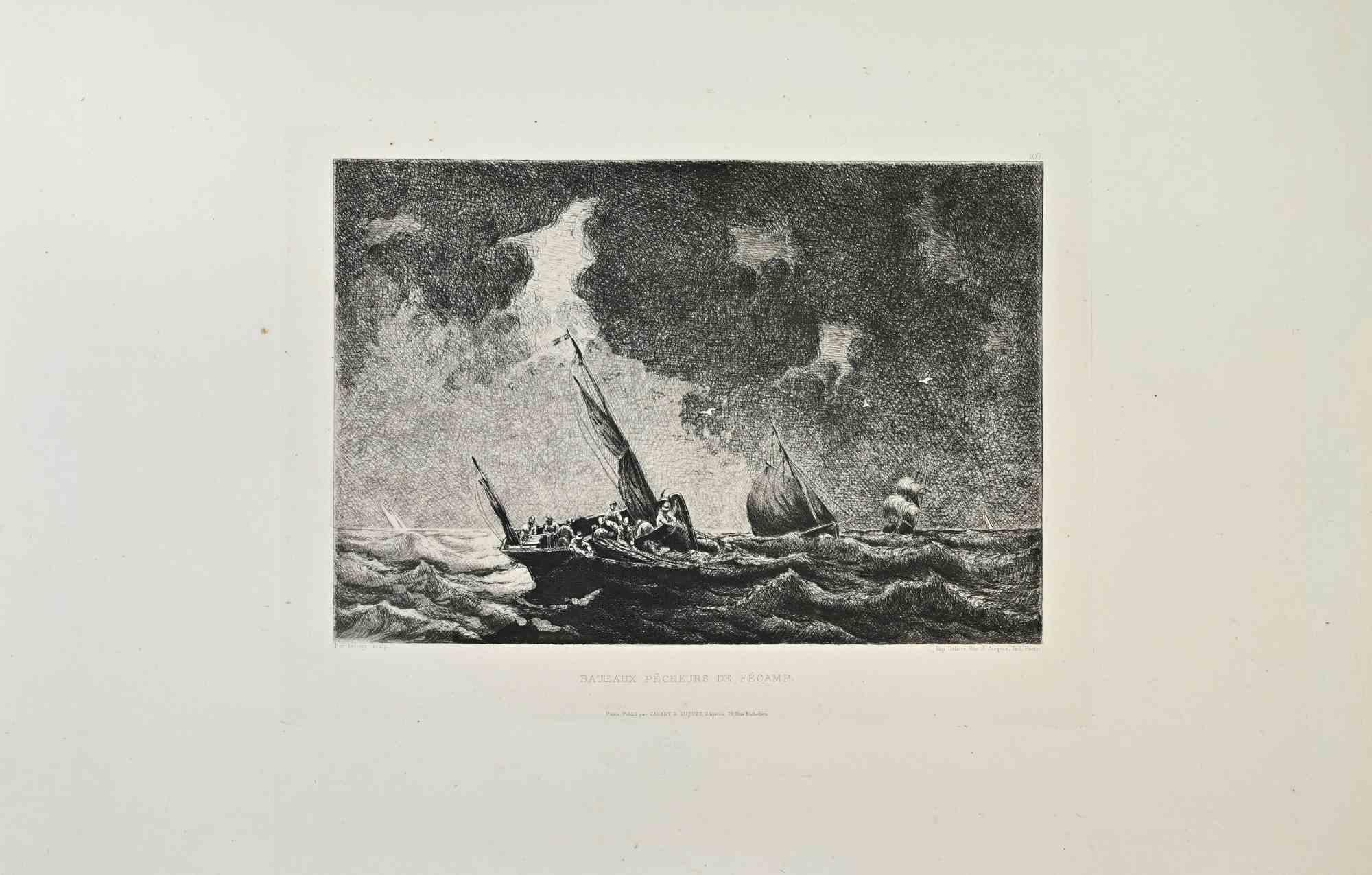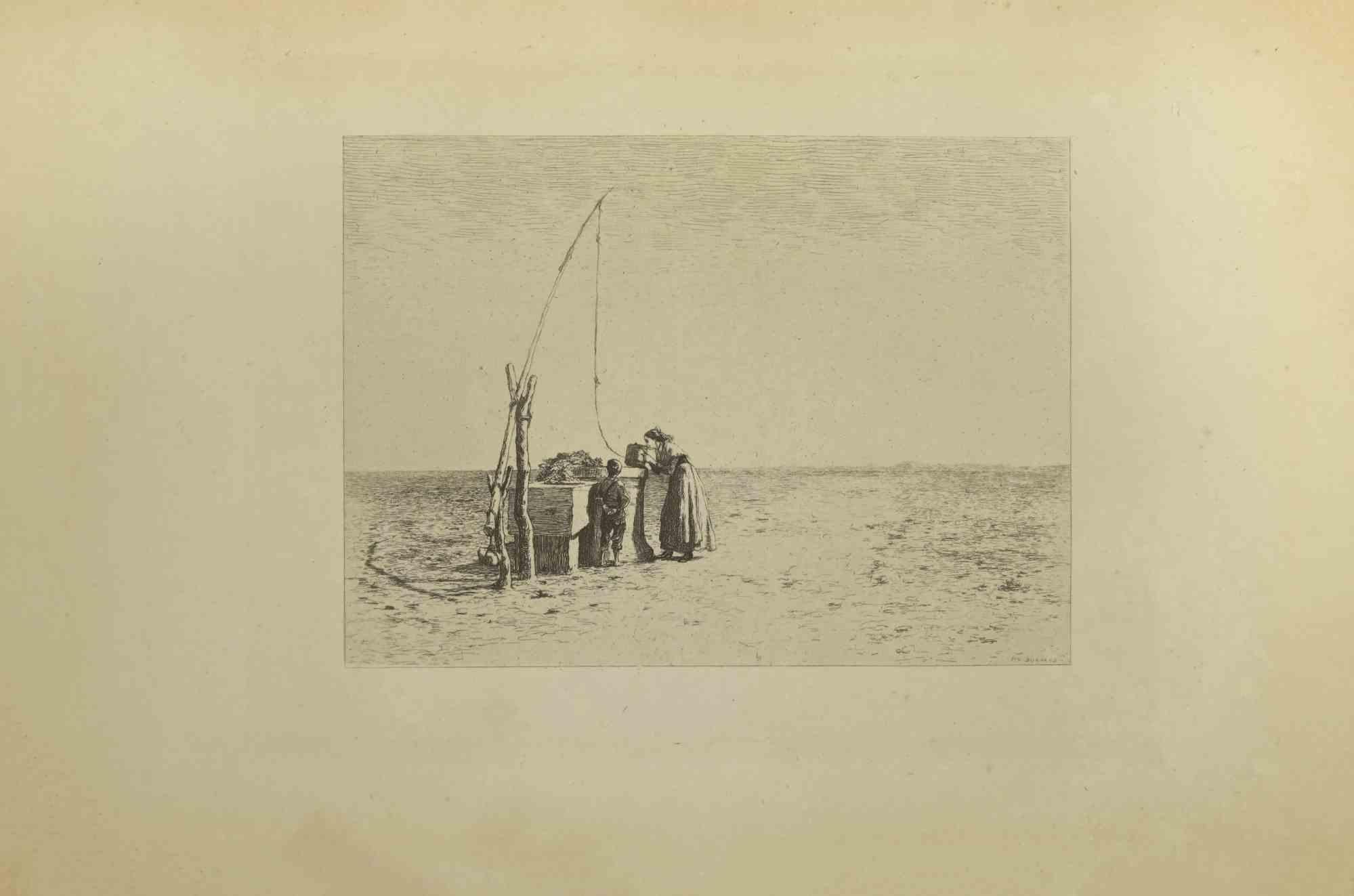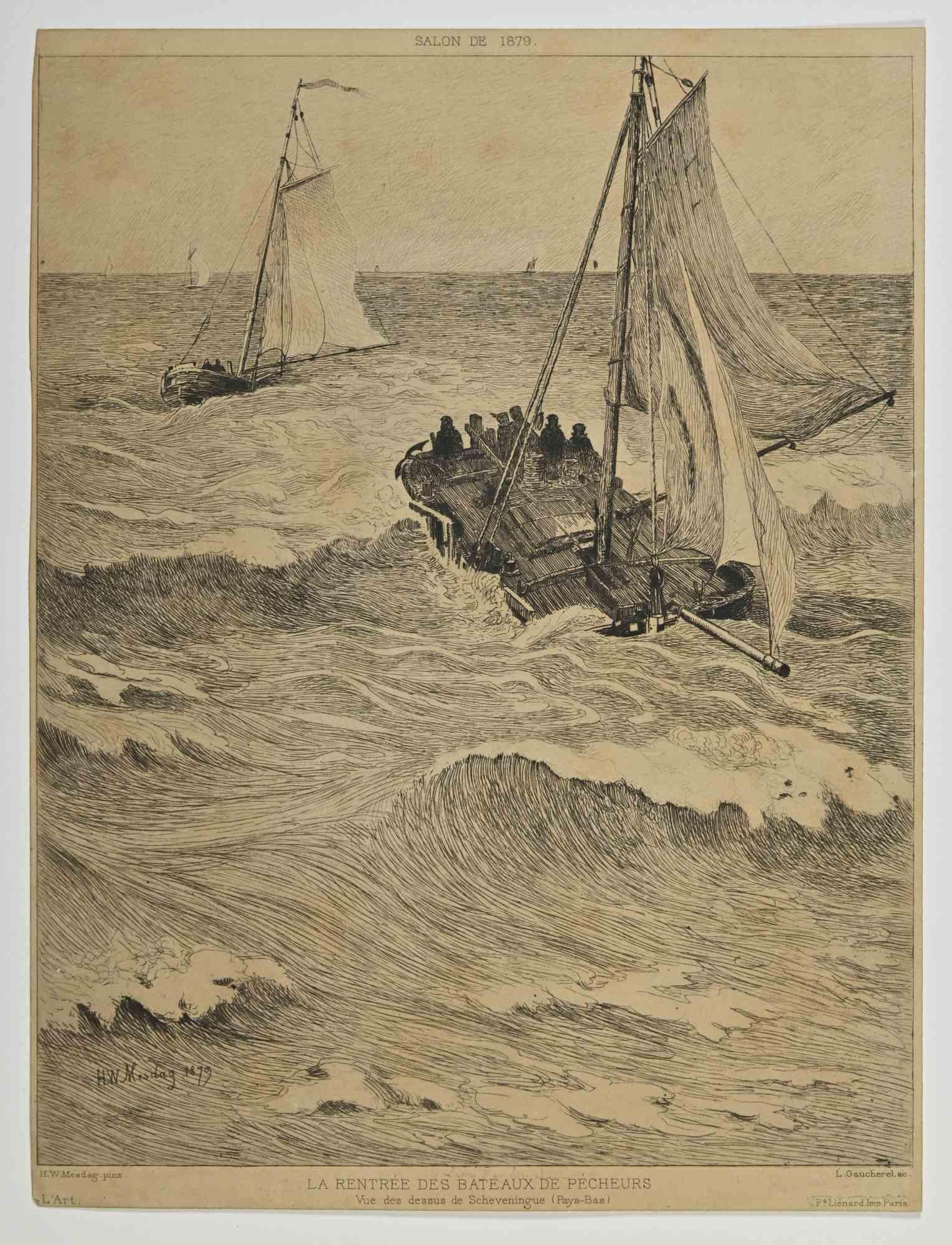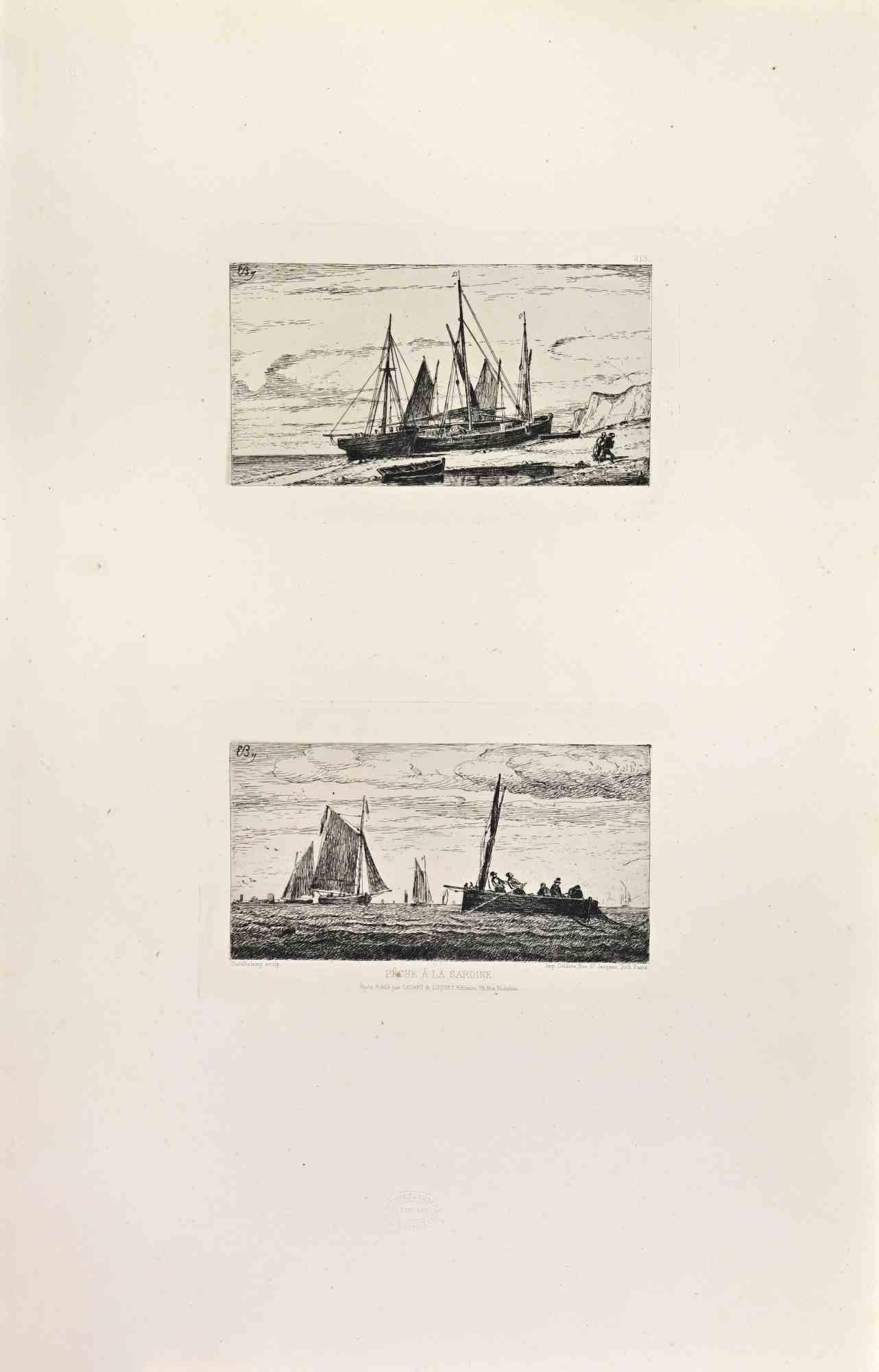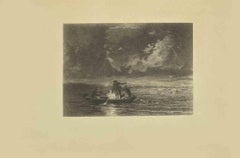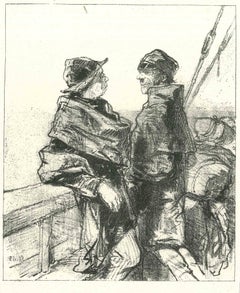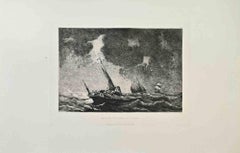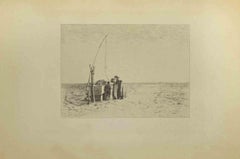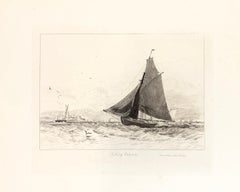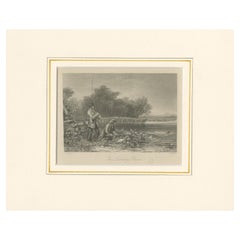Items Similar to Fishermen - Etching by Eugène Burnand - Late 19th century
Want more images or videos?
Request additional images or videos from the seller
1 of 2
Eugène BurnandFishermen - Etching by Eugène Burnand - Late 19th centuryLate 19th century
Late 19th century
$142.28
$237.1440% Off
£108.13
£180.2240% Off
€120
€20040% Off
CA$199.65
CA$332.7440% Off
A$217.86
A$363.1040% Off
CHF 113.08
CHF 188.4740% Off
MX$2,606.48
MX$4,344.1440% Off
NOK 1,435.36
NOK 2,392.2740% Off
SEK 1,344.48
SEK 2,240.8140% Off
DKK 914.29
DKK 1,523.8140% Off
About the Item
Fishermen is an original etching realized by Eugène Burnand (1850-1921) in the Late 19th century.
Good conditions with foxing.
The artwork is realized through short and deft strokes, an admirable scene created by realistic mastery through well-application of chiaroscuro.
- Creator:Eugène Burnand
- Creation Year:Late 19th century
- Dimensions:Height: 7.49 in (19 cm)Width: 10.63 in (27 cm)Depth: 0.08 in (2 mm)
- Medium:
- Movement & Style:
- Period:
- Framing:Framing Options Available
- Condition:Insurance may be requested by customers as additional service, contact us for more information.
- Gallery Location:Roma, IT
- Reference Number:Seller: T-1415381stDibs: LU650312858642
About the Seller
4.9
Platinum Seller
Premium sellers with a 4.7+ rating and 24-hour response times
1stDibs seller since 2017
7,802 sales on 1stDibs
Typical response time: 1 hour
- ShippingRetrieving quote...Shipping from: Grasse, France
- Return Policy
More From This Seller
View AllFishermen - Etching by Eugène Burnand - Late 19th century
Located in Roma, IT
Fishermen is an original etching realized by Eugène Burnand (1850-1921) in the Late 19th century.
Good conditions with foxing.
The artwork is realize...
Category
Late 19th Century Modern Figurative Prints
Materials
Engraving, Etching
Fishermen - Original Lithograph after Paul Gavarni - 1881
By Paul Gavarni
Located in Roma, IT
Fishermen is an original lithograph artwork on ivory-colored paper, realized by the French draftsman Paul Gavarni (after) (alias Guillaume Sulpice Chevalier Gavarni, 1804-1866) in Pa...
Category
1880s Modern Figurative Prints
Materials
Paper, Lithograph
Bateaux Pecheurs de Fécamp - Etching by Pierre-Emile Berthelemy - 1870s
Located in Roma, IT
Bateaux Pecheurs de Fécamp is a black and white etching realized by Pierre-Emile Berthelemy (1818-1890) in 1870s.
Titled in the lower.
Image size: 28cmx19cm.
Very Good condition.
...
Category
1870s Modern Figurative Prints
Materials
Etching
The Well - Etching by Eugène Burnand - Late 19th century
Located in Roma, IT
The Well is an original etching realized by Eugène Burnand (1850-1921) in the Late 19th century.
Signed on the plate.
Good conditions with foxing.
The artwork is realized through...
Category
Late 19th Century Modern Figurative Prints
Materials
Engraving, Etching
La Rentrée des Bateaux des Pêcheurs - Etching by Lèon Gaucherel - 19th Century
By Léon Gaucherel
Located in Roma, IT
La Rentrée des Bateaux des Pêcheurs is an artwork realized by Léon Gaucherel in the 19th Century .
Etching.
Signed on Plate.
Category
1860s Modern Figurative Prints
Materials
Etching
Peche a la Sardine - Etching by Pierre-Émile Berthélemy - 1860s
Located in Roma, IT
Peche a la Sardine is a black and White etching realized by Pierre-Émile Berthélemy in the 1860s.
Titled in the lower.
Image size: 12 x 18, 12 x 18.
Very good impression with wid...
Category
1860s Modern Figurative Prints
Materials
Etching
You May Also Like
19th-Century Maritime Engraving – Fishing Boats and Rowers at Sea
Located in Langweer, NL
19th-Century Maritime Engraving – Fishing Boats and Rowers at Sea
This evocative 19th-century maritime engraving presents a lively coastal scene featuring two fishing vessels under ...
Category
Antique Late 19th Century European Prints
Materials
Paper
18: Fishing Smack
Located in Columbia, MO
Edward William Cooke was born in Pentonville. His father, George Cooke, and uncle William Bernard Cooke were also well-known line engravers. Growing up in an environment of artists,...
Category
1820s Naturalistic Landscape Prints
Materials
Etching
Fishermen - Original lithograph (1897/98)
By Auguste Louis Lepère
Located in Paris, IDF
Auguste LEPERE (1849 - 1918)
Fishermen
Original litograph
1897/98
Printed on paper Vélin
Size 40 x 31 cm (c. 16 x 12")
INFORMATION : Published by 'Estampe Moderne, Paris, 1897-1...
Category
1890s Art Nouveau Figurative Prints
Materials
Lithograph
Antique Print of Fishermen by Rogerson
Located in Langweer, NL
Antique print titled 'The Landing Place'. Original antique print of fishermen. Engraved by E. Hacker. Published by Rogerson, 1863.
Category
Antique Mid-19th Century Prints
Materials
Paper
63: Fishing Boat
Located in Columbia, MO
Edward William Cooke was born in Pentonville. His father, George Cooke, and uncle William Bernard Cooke were also well-known line engravers. Growing up in an environment of artists,...
Category
1820s Naturalistic Landscape Prints
Materials
Etching
Antique Print of Fishermen, circa 1900
Located in Langweer, NL
Antique print titled 'Auswerfen der Angel'. Original antique print of fishermen. Published circa 1900.
Artists and Engravers: Anonymous.
Condition: Good, general age-related to...
Category
Antique 19th Century Prints
Materials
Paper
$123 Sale Price
20% Off
More Ways To Browse
Dali Mythology
David Hammons
Diego Rivera Lithograph
Divina Commedia
Dorothy Iannone
Eigenthum D Verleger
Engraving Flemish
Ensor Etching
Eugene Hawkins
Eugenio Granell
Femme Nue Couchee
Frank Benson Etchings
Georges Braque Greek
Henri Privat Livemont
Henry Moore 1949
Henryk Tomaszewski
Hockney Ipad Drawings
Invader Rubik
